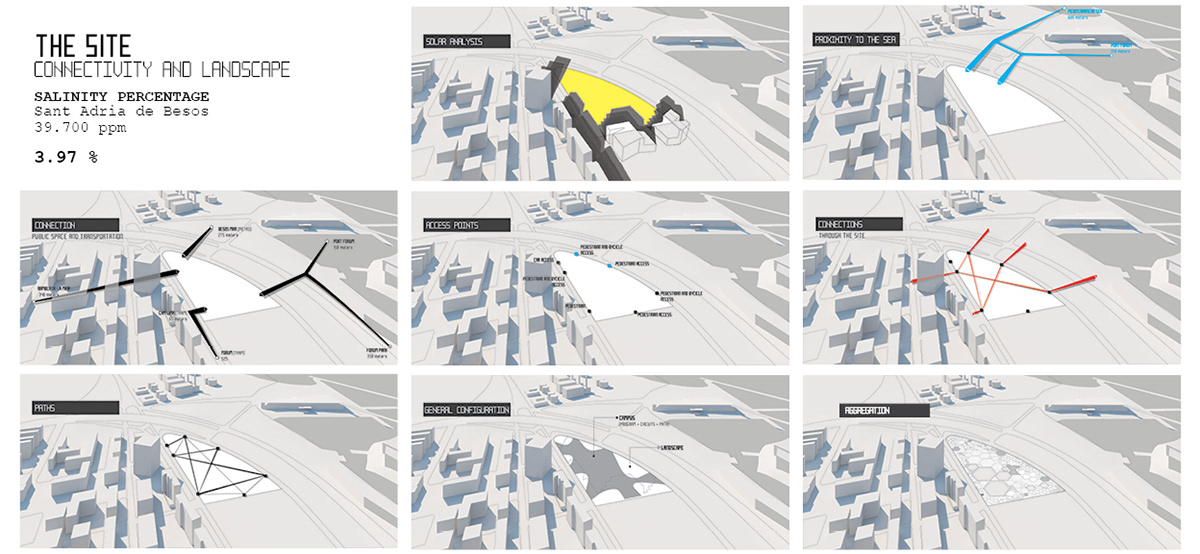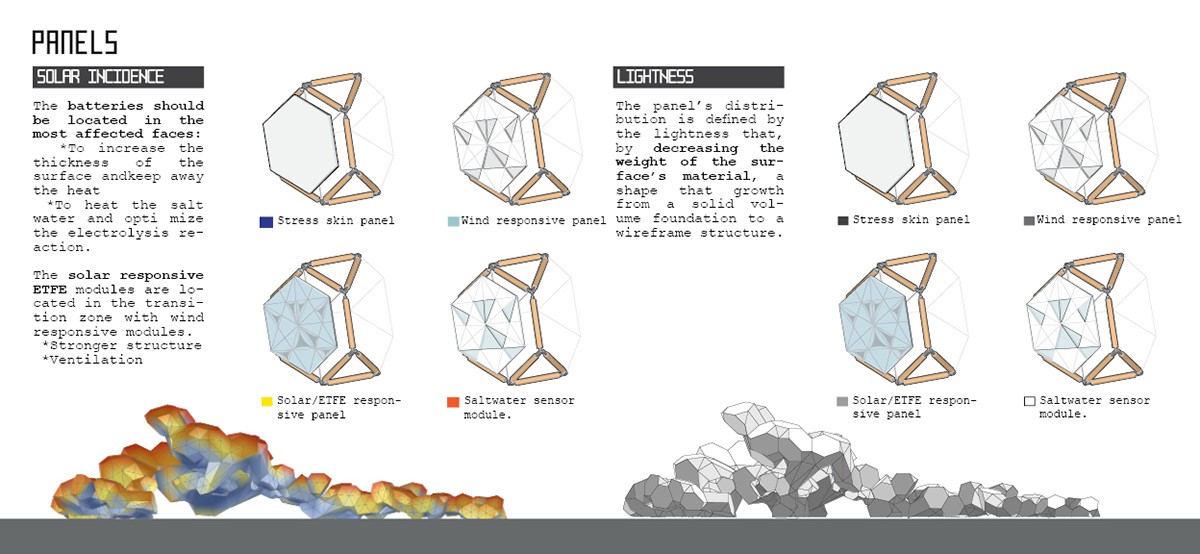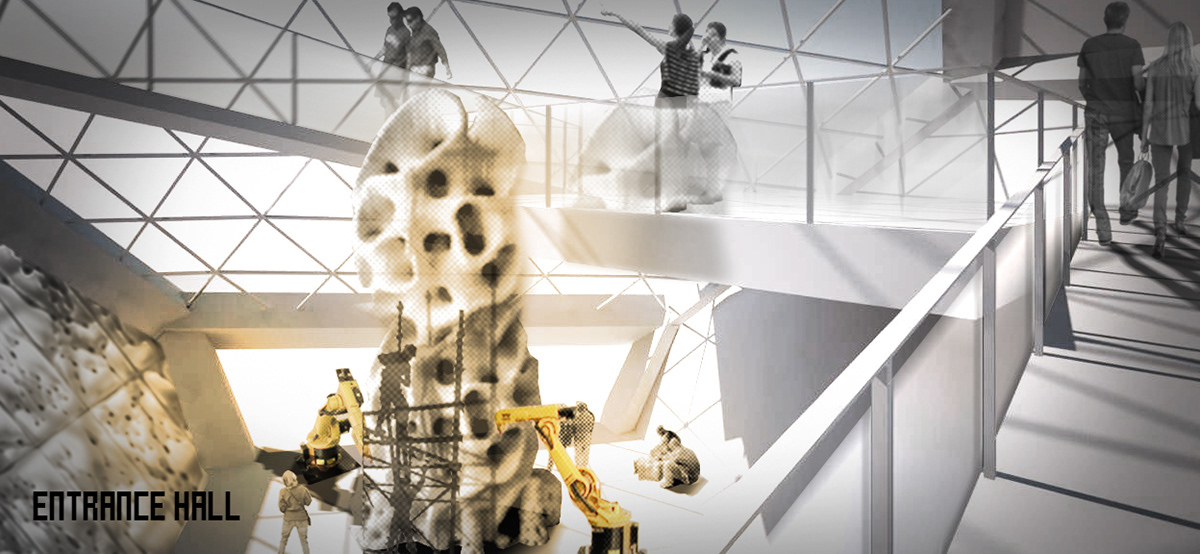SOCIAL INNOVATION INCUBATOR
Master of Advanced Architecture / IAAC
Self-sufficient Buildings
Tutors: Enric Ruiz Geli / Mireia Luzárraga
Team: Alejandra Díaz de Leon, Robert Garita, Aldo Sollazzo, Mauricio Valenzuela

Intro
The beginning of the crisis is the end of the economic model based on carbon and oil. Science and technology advance fast. However, millions of jobs in manufacture and services were eliminated because they operate in THE old model that cannot support them.
We are living a revolution that links technology, communication and energy. To beat the crisis we need to live in this new paradigm, rely on innovation and create a knowledge society to organize the Third Industrial Revolution.
What is the Social Innovation Incubator?
Located 600 meters from the Mediterranean Sea, the Social Innovation Incubator responds to the context. It focuses on helping to fight the unemployment crisis of Barcelona and uses the salinity of the Mediterranean Sea as an energetic tool to develop a project that generates opportunities and innovation.
It is based on innovation as the transition to the new economic model where technology, communication and energy merge. It performs through an educational path and is set in a revolutionary environment to give people a platform to innovate and create job opportunities.
In order to promote innovation, the building and its processes reflect it. The program is based on a Learning Methodology that provides tools and knowledge for innovating through multidisciplinary strategies in fast track education.
The building is generated around the learning path by aggregation. The fractal growth of the structure demands lightness: the main frames are made of cardboard tubes and the stronger modules lay at the bottom and grow lighter to the top.
The different materials of the panels allow transparency, natural ventilation or contain the Mediterranean Power Tool which consists of a salt battery that gives energy to light sensors that open or close the panels in response to solar incidence. The salt water is obtained from the Mediterranean Sea which contains the ideal grade of salinity needed.





The salt battery is made of 23 cells that contain water of the mediterranean see (8% of salinity) and small sheets of coper and aluminium as conductive material. Each battery generates enough voltage to turn 2 arduinos on (12 volts in total).





Physical model (laser cut)
Photo by © Copyright Juan Carlos Garay

Photo by © Copyright Juan Carlos Garay

Photo by © Copyright Juan Carlos Garay
For more info about this project, please visit the Institute for Advanced Architecture blog:
http://www.iaacblog.com/maa2012-2013-self-sufficient-building/2013/08/social-innovation-incubator-2/
